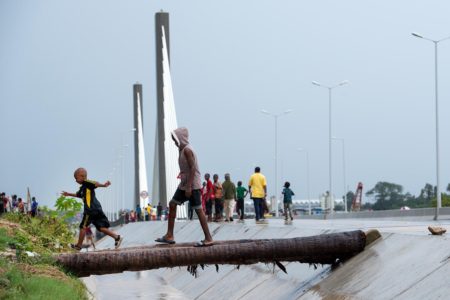The new bridge to Kigamboni is a sight to see, so I have been told.
It took almost five years to construct and was opened officially several months ago.
The media coverage and pictures made me think it concerned another continent, in no way could I picture a six lane cable suspension bridge in Dar Es Salaam.
It was high time to see with my own eyes, so I made the trip last week.
To reach it can be an adventure in itself if one crosses the Kurasini port area — which is domain of heavy duty lorries of all types.
Obviously the vehicles have caused damage and the roads are full of potholes.

In no way could I picture a six lane cable suspension bridge in Dar es Salaam. It was high time to see it with my own eyes…
One has to also watch out for those turning and queuing to enter or exit the port.
Then suddenly this amazing modern architecture rises up in front, together with speed limit signs of 30 kmh.
Why would that be? Maybe a Chinese rule for bridges.
For such a beautiful bridge a toll fee of 2,000 TSH per car is very reasonable and one more or less slides over the water, with very few other cars on the road.
The next impressive experience is how it all ends.
No explicit warning — but suddenly one returns to reality and we’re back in Africa.
Dust and coconut palms, dirt road and side tracks with holes and bumps and a few goats grazing the sparse grass around.
A lady selling her bananas under a sun screen is positioned strategically at the first junction of tracks.
Later in the afternoon several ice cream tricycles have gathered at the junction as well, apparently the public is expected soon.
Indeed, heading back to the bridge there are plenty of adults with children making their late afternoon stroll and young boys on bicycles.
Unfortunately, no facility whatsoever for the non-motorized traffic.
Intentional or an omission – it’s China in Africa.

